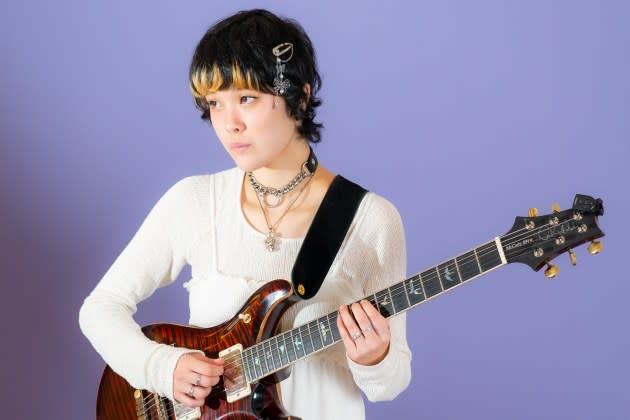This Preschool Teacher Is Making Smart, Surprising Music Beyond Genre

The second half of 2022 was full of change for Mei Semones. The musician had just moved to a new city, New York. She was falling in love as she began a new relationship while also ending a close friendship, and she was adjusting to the unglamorous realities of adulthood after having graduated from Berklee College of Music that spring.
“It was a transition period of my life,” says Semones, who struggled to find time for creativity now that she had a full-time job at a Japanese preschool. “I was trying to work on music after a 10-hour shift, and I was like, ‘This is just not working right now. I’m miserable.”
More from Rolling Stone
Despite her workload, Semones managed to write a series of songs during that time that tackled this period of instability head-on. Those songs form the backbone of Kabutomushi, Semones’ third EP, due later this spring. With forays into indie rock and melodic pop, Kabutomushi is her most exciting and fully-formed release yet, expanding on the adventurous jazz-based music she’s been releasing for the last few years. She made the record with her band, which is made up of collaborators she met during her time at Berklee: Noah Leong on viola, violinist Claudius Agrippa, bassist Jaden Raso, and drummer Ransom McCafferty.
Semones’ music is hard to categorize, something she’s both well aware of and not particularly worried about. When someone asks her to describe what she makes in one sentence, she tells them it’s “jazz- and bossa nova-influenced indie J-pop” and leaves it at that. She’s introduced her music to all sorts of new audiences in the past year or two, having gotten opportunities to share the stage with everyone from Korean indie rockers Say Sue Me to the alt-pop singer BRATTY, for whom Semones will be opening on tour this spring, and she doesn’t care much how any new fans might describe what they hear.
The new EP (whose title means “rhinoceros beetle” in Japanese) ranges from the jazz-leaning arrangement of “Tegami” to the anthemic indie-rock melody of “Inaka” to “Wakare No Kotoba,” which Semones says began with an arpeggio she learned in college. “I was like, ‘This is really sick,’” Semones says of the arpeggio, which forms the basis for the song’s guitar line. “People use it in a modern jazz context, improvising, but what if it’s just in a pop song?’”
Semones’ unique blend of influences (everything from John Coltrane to Smashing Pumpkins) and taste can be traced back to her childhood in Michigan, where she first fell for the guitar after watching Marty McFly perform “Johnny B. Goode” in Back to the Future. That led to a typical pre-teen classic rock phase — “Stairway to Heaven,” the Red Hot Chili Peppers — before diving deep into jazz in middle and high school.
Semones’ lyrics are in both English and Japanese, which is not an incidental fact or a gimmick but is, in fact, essential to Semones’ own sense of self as an artist. “I didn’t feel like I even liked the songs I was writing until I started writing in Japanese and English,” she says of her adolescent attempts at songwriting. “Before freshman year of college I had never tried to write in Japanese, but then I was like, ‘This is what I want my music to be like.’”

Semones is well aware that she typically plays for primarily English-speaking audiences, and she uses the switching between languages as an additional narrative tool at her disposal: a way to startle audiences by switching from one line to the next, or a means of reinforcing certain musical or narrative points she’s making by switching from the familiar to the unfamiliar. A rare exception to this dynamic came last month, when Semones played her first-ever show in Japan to a sold-out crowd (Semones’ mom brought 15 friends to the show).
Looking forward, Semones is excited to try to exist in both jazz and rock spaces, to play the Bowery Ballroom one night and the Blue Note the next. She is already at work on her debut LP, which she expects to be “all over the place”: originals that feel like jazz standards, waltzes, indie rockers, more of everything she’s been synthesizing these past few years.
Semones is mostly just grateful to have more time to be making music (her preschool job is now merely part-time). Every time she plays a gig in her new hometown of New York, she thinks to herself: “This is just great that I can do this.” Even though it’s her third EP, Semones sees Kabutomushi as a beginning. “I feel like I’m in the start of a new phase,” she says.
Best of Rolling Stone

